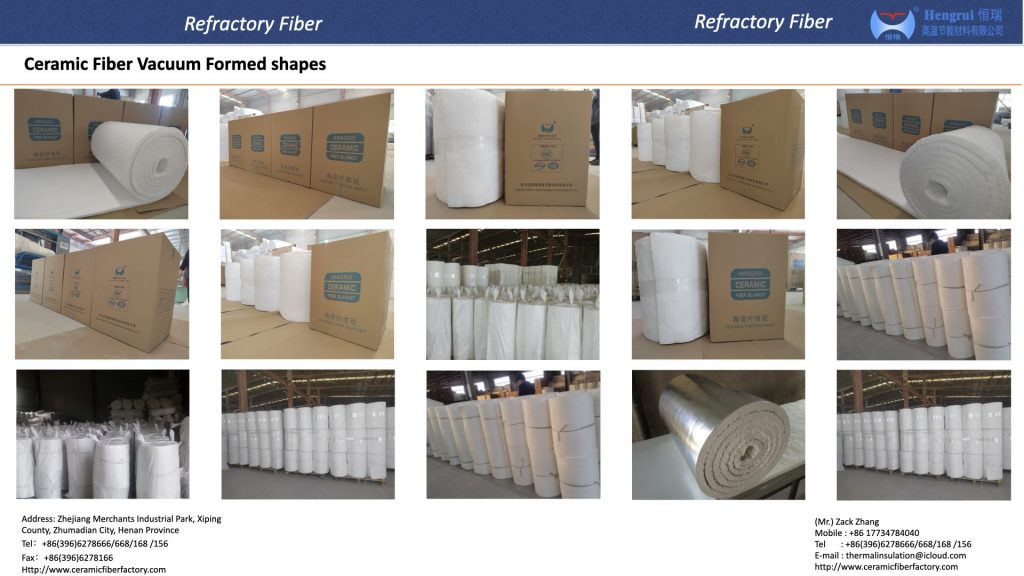In the petrochemical sector, insulation materials must withstand extreme temperatures, aggressive process conditions, and demanding operational environments. Among these, ceramic fiber blanket has emerged as a versatile solution. Its lightweight structure, outstanding thermal insulation, and high temperature tolerance make it ideal for heating furnaces, steam pipelines, sealing applications, high-temperature equipment, and fire-safety systems in petrochemical plants.

For high-temperature steam pipelines in refining and petrochemical plants, ceramic fiber blankets combined with aluminium foil jackets (e.g., ceramic fiber blanket with aluminium foil composite) form an efficient insulation system. The blanket blocks conductive heat loss, while the foil reflects radiant heat. This composite reduces surface temperatures, improves energy efficiency, and is particularly useful in long-distance steam transmission lines.
In tubular heating furnaces, ceramic fiber blankets are used to seal gaps between furnace tubes and roof plates, preventing heat loss and gas leakage. Their flexibility and high resilience allow them to absorb thermal expansion and contraction, offering long service life and better sealing compared to rigid refractory materials.
Reactors, heat-exchangers, boilers and other high-temperature equipment in petrochemical plants benefit from ceramic fiber blanket insulation. It effectively isolates the hot surfaces, protects outer shells, reduces external temperatures, lowers personnel exposure to heat, and helps control ambient heat impact on surrounding areas.
The fire-resistant nature of ceramic fiber blankets makes them suitable as fire curtains, emergency fire blankets or fire-barrier materials inside petrochemical facilities. When a fire occurs, the blanket material can help block flame propagation and provide critical time for evacuation and firefighting.
Ceramic fiber blankets are typically produced by melting aluminosilicate raw materials at high temperature, then spinning or blowing fibers, and performing needle-punched or stitched forming. The resulting fibre mat is lightweight, flexible and holds strong insulation properties even at elevated temperatures. They are rated for continuous use at 1260 °C or higher depending on the grade.
Key manufacturing features include:
Needled processing for high tensile strength and mechanical robustness.
Low thermal conductivity and low heat storage capacity, which reduce furnace weight and improve response time.
Chemical and thermal stability in aggressive environments (acid, alkali, steam, etc.).
Energy Savings: Reduced heat loss and improved insulation help lower fuel or electricity consumption in high-temperature processes.
Reduced Structural Load: Lightweight insulation cuts down on steel structure requirements and supports faster installation.
Improved Maintenance: Flexible blanket systems are easier to install, replace or modify compared to heavy refractory bricks.
Enhanced Safety: Lower external temperatures, better fire-protection characteristics and improved control of heat transfer protect both equipment and personnel.
Broad Versatility: Adaptable to different insulation demands — furnace linings, piping systems, seals and fire-barriers — making it a flexible choice for petrochemical plants.
When specifying ceramic fiber blanket in petrochemical applications, key parameters to review include:
Ceramic fiber blankets represent a proven, high-performance insulation solution for the petrochemical industry. With their combination of high-temperature resistance, low thermal conductivity, lightweight structure and flexibility, they enable refineries and chemical plants to improve energy efficiency, enhance safety, lower maintenance costs and achieve reliable performance under demanding conditions. For any high-temperature insulation challenge in a petrochemical environment, ceramic fiber blanket deserves a prime role.


